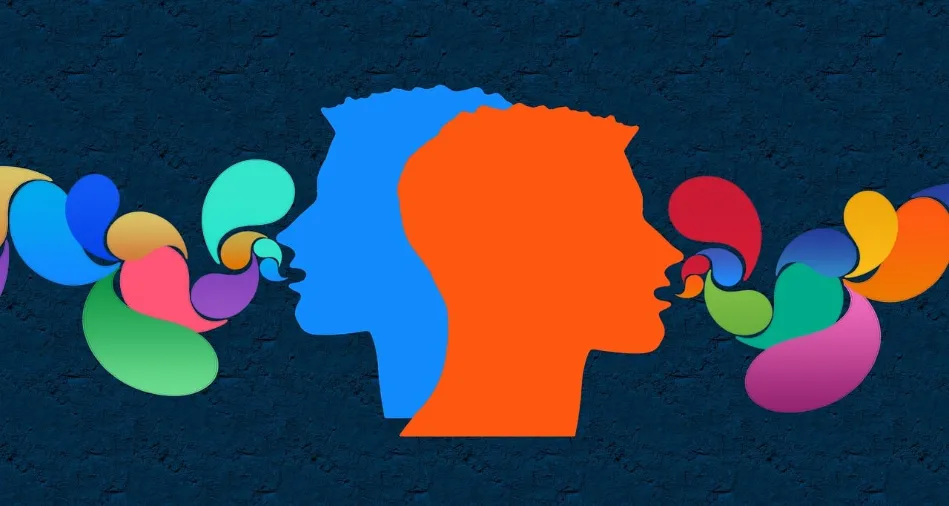[read-time]

As autumn leaves begin to fall and the air turns crisp, many people find themselves drawn to the idea of personal transformation. This phenomenon, dubbed the “October Theory” by social media enthusiasts, suggests that the tenth month of the year offers a unique opportunity for goal-setting and self-improvement. But how can we harness this autumnal energy to create lasting change in our lives?
In this comprehensive guide, we’ll explore the October Theory and introduce three lesser-known SMART steps that can help you set and achieve meaningful goals. Whether you’re looking to advance your career, improve your health, or pursue a long-held dream, these strategies will provide you with the tools you need to succeed. So grab a pumpkin spice latte, cozy up in your favorite sweater, and let’s dive into the world of autumn-inspired self-improvement.
Learn how to use your personality color trait, to support you in achieving your goals.
Getting to Grips With the October Theory
The October Theory has gained traction on social media platforms, with many users claiming that the fall season offers a prime opportunity for personal growth and transformation. But what exactly is this theory, and why has it resonated with so many people?
The Essence of the October Theory
At its core, the October Theory posits that October serves as a natural reset point in the year, much like January but without the pressure and hype associated with New Year’s resolutions. Proponents of this theory argue that the changing seasons and the approach of the year’s end create an ideal environment for reflection, goal-setting, and personal development.
Psychological Foundations
While the October Theory may seem like a social media trend, it actually aligns with established psychological principles. The changing of seasons can have a profound impact on our mood and motivation. As the days grow shorter and the weather cooler, many people experience a natural inclination to nest, reflect, and prepare for the future.
Cultural Context
In many cultures, autumn is associated with harvest time – a period of reaping the rewards of hard work and planning for the future. This cultural context may contribute to the feeling that October is an opportune time for personal growth and goal-setting.
The 90-Day Window
One compelling aspect of the October Theory is the idea of a 90-day window for transformation. With approximately three months between October and the new year, this timeframe aligns well with research on habit formation and behavior change.
The Power of SMART Goals
Before we delve into the lesser-known steps for achieving your October Theory-inspired goals, it’s crucial to understand the foundation of effective goal-setting: SMART goals. This acronym stands for Specific, Measurable, Achievable, Relevant, and Time-bound. By applying these criteria to your objectives, you can dramatically increase your chances of success.
Specific: Clarifying Your Intentions
When setting goals, specificity is key. Vague aspirations like “get in shape” or “be more productive” are difficult to act upon. Instead, define your goals with precision. For example, “run a 5K race by December 31st” or “complete three major work projects before the holiday break” provide clear targets to aim for.
Measurable: Tracking Your Progress
Measurable goals allow you to monitor your advancement and stay motivated. Incorporate concrete metrics into your objectives, such as “lose 10 pounds” or “save $1000 for a vacation fund.” These quantifiable benchmarks make it easy to assess your progress and adjust your strategies as needed.
Achievable: Setting Realistic Expectations
While it’s important to challenge yourself, setting unrealistic goals can lead to frustration and disappointment. Consider your current circumstances, resources, and capabilities when defining your objectives. An achievable goal stretches your abilities without being impossible to reach.
Relevant: Aligning with Your Values
Ensure that your goals are relevant to your overall life plan and personal values. A relevant goal resonates with your deeper aspirations and contributes meaningfully to your long-term success and happiness.
Time-bound: Creating Urgency
Setting deadlines for your goals creates a sense of urgency and helps prevent procrastination. The October Theory’s 90-day window provides a natural timeframe, but you can also set shorter milestones within this period to maintain momentum.
Three Lesser-Known SMART Steps for October Theory Success

Now that we’ve covered the basics of SMART goals, let’s explore three lesser-known steps that can supercharge your October Theory-inspired transformation. These strategies build upon the SMART framework while incorporating insights from psychology, neuroscience, and personal development research.
Step 1: Seasonal Synergy – Aligning Goals with Autumn Rhythms
The first lesser-known step in maximizing your October Theory success is to align your goals with the natural rhythms of the autumn season. This approach taps into the power of environmental cues and biological cycles to enhance your motivation and focus.
Embracing the Harvest Mindset
Just as farmers reap their crops in the fall, adopt a harvest mindset for your personal and professional life. Identify areas where you’ve been sowing seeds of effort throughout the year, and focus on bringing those projects to fruition.
Leveraging Circadian Rhythms
As daylight hours decrease, our circadian rhythms naturally shift. Use this change to your advantage by adjusting your daily routines. For example, you might find that you’re more productive in the early morning hours during autumn. Align your most important goal-related tasks with these peak energy periods.
Incorporating Nature-Inspired Reflection
Take cues from the changing landscape to inspire your goal-setting process. Just as trees shed their leaves, consider what aspects of your life you need to let go of to make room for new growth. Use the vivid autumn colors as a reminder to add vibrancy and passion to your objectives.
Creating Cozy Goal Spaces
Capitalize on the “nesting” instinct that often accompanies cooler weather. Design a comfortable, inviting space in your home dedicated to working on your goals. This could be a cozy reading nook for educational pursuits or a well-organized desk area for professional development.
Step 2: Micro-Momentum – Harnessing the Power of Tiny Wins
The second lesser-known step in our October Theory strategy involves breaking down your SMART goals into micro-actions that create a powerful sense of momentum. This approach leverages the psychology of small wins to build confidence and sustain motivation throughout your 90-day journey.
Defining Daily Micro-Goals
For each of your SMART goals, identify tiny, achievable actions you can take every day. These micro-goals should be so small that they feel almost effortless. For example, if your goal is to write a novel, your daily micro-goal might be to write just 50 words.
Celebrating Micro-Victories
Acknowledge and celebrate each micro-goal you complete. This positive reinforcement triggers the release of dopamine in your brain, creating a reward cycle that encourages continued progress. Consider using a goal-tracking app or a simple journal to record your daily wins.
Stacking Micro-Habits
As you become comfortable with your initial micro-goals, begin stacking them to create more substantial habits. For instance, if you’ve mastered writing 50 words a day, gradually increase to 100, then 200, building a robust writing habit over time.
Overcoming Micro-Obstacles
Identify potential micro-obstacles that might impede your progress and develop strategies to overcome them. If your micro-goal is to meditate for five minutes each morning, prepare for obstacles like oversleeping by setting multiple alarms or placing your meditation cushion next to your bed.
Step 3: Adaptive Accountability – Creating a Flexible Support System
The final lesser-known step in our October Theory approach involves building a dynamic accountability system that adapts to your changing needs and circumstances. This flexible support structure helps you stay on track while allowing for the natural ebbs and flows of life.
Assembling Your Accountability Team
Recruit a diverse group of supporters for your October Theory journey. This might include a close friend, a professional mentor, an online community, and even an AI-powered chatbot. Each member of your team can offer different types of support and perspective.
Implementing Tiered Check-Ins
Establish a tiered system of check-ins with varying frequencies and depths. For example:
- Daily: Quick text message to a buddy about your micro-goal progress
- Weekly: In-depth call with a mentor to discuss challenges and victories
- Monthly: Group video chat with fellow goal-setters to share insights and strategies
Utilizing Adaptive Feedback Loops
Create a system for regularly assessing the effectiveness of your accountability methods. Be willing to adjust your support structure as your needs change. If weekly check-ins feel too frequent, switch to bi-weekly. If you need more encouragement, increase the frequency of your interactions.
Incorporating Technology Wisely
Leverage technology to enhance your accountability system without becoming overly reliant on it. Use apps for tracking progress and scheduling check-ins, but also prioritize face-to-face or voice interactions to maintain a human connection.
Applying the October Theory to Different Life Areas
The October Theory and our three lesser-known SMART steps can be applied to various aspects of your life. Let’s explore how you can use these strategies to transform different areas over the next 90 days.
Career Advancement
Whether you’re seeking a promotion, changing careers, or starting a business, the October Theory provides an ideal framework for professional growth.
Setting SMART Career Goals
Example: “By December 31st, I will complete three professional development courses related to my desired field and update my resume to reflect my new skills.”
Seasonal Synergy for Career Growth
Align your career goals with the natural rhythm of the business world. Many companies begin planning for the next year in the fall, making it an opportune time to position yourself for new opportunities.
Micro-Momentum in Professional Development
Break down your career advancement goals into daily micro-actions, such as spending 15 minutes networking on LinkedIn or reading one industry article each day.
Adaptive Accountability for Career Success
Create a career mastermind group that meets monthly to discuss goals, challenges, and strategies for professional growth.
Health and Wellness
The autumn season offers a perfect opportunity to focus on your physical and mental well-being before the holiday season arrives.
SMART Health Goals
Example: “I will establish a consistent sleep schedule, going to bed by 10 PM and waking up at 6 AM on weekdays, for 80% of the next 90 days.”
Seasonal Synergy for Wellness
Take advantage of the cooler weather to explore outdoor fitness activities like hiking or cycling. Use the earlier sunsets to create a calming evening routine that promotes better sleep.
Micro-Momentum in Health Habits
Start with micro-goals like drinking an extra glass of water each day or doing five minutes of stretching every morning.
Adaptive Accountability for Wellness
Use a combination of fitness tracking apps, weekly check-ins with a workout buddy, and monthly consultations with a nutritionist to stay on track with your health goals.
Personal Growth and Learning
Autumn’s association with back-to-school season makes it an ideal time to focus on personal development and acquiring new skills.
SMART Learning Goals
Example: “By December 15th, I will complete an online course in digital marketing and create a portfolio showcasing three projects applying my new skills.”
Seasonal Synergy for Personal Growth
Embrace the scholarly atmosphere of fall by creating a dedicated study space in your home and establishing a regular learning routine.
Micro-Momentum in Skill Acquisition
Set daily micro-goals like learning one new vocabulary word, practicing a language for 10 minutes, or watching one educational video.
Adaptive Accountability for Learning
Join an online study group that meets weekly to discuss progress and share resources. Use spaced repetition apps to reinforce your learning over time.
Overcoming Challenges in Your October Theory Journey
While the October Theory offers a powerful framework for transformation, you may encounter obstacles along the way. Here are some common challenges and strategies for overcoming them:
Maintaining Motivation as Days Grow Shorter
As daylight hours decrease, you may find your energy and motivation waning. Combat this by:
- Using light therapy lamps to simulate natural daylight
- Scheduling your most important goal-related tasks during your peak energy hours
- Incorporating mood-boosting activities like exercise or social interactions into your routine
Balancing Multiple Goals
If you’re pursuing goals in different life areas, you may feel overwhelmed. To maintain balance:
- Prioritize your goals and focus on no more than 2-3 major objectives at a time
- Use time-blocking techniques to allocate specific periods for each goal
- Look for synergies between goals (e.g., combining social and fitness goals by joining a sports team)
Adapting to Unexpected Changes
Life doesn’t always go according to plan. To stay on track when faced with unexpected challenges:
- Build flexibility into your goal timelines
- Develop contingency plans for common obstacles
- Practice resilience techniques like mindfulness and positive self-talk
Avoiding Burnout
The excitement of the October Theory can sometimes lead to overcommitment. Prevent burnout by:
- Incorporating regular rest and recovery periods into your plan
- Practicing self-compassion and adjusting goals when necessary
- Celebrating progress and small wins along the way
The Takeaway
Embracing Your October Theory Transformation
As we’ve explored throughout this guide, the October Theory offers a unique opportunity to harness the transformative energy of autumn for personal growth and goal achievement. By combining this seasonal motivation with the power of SMART goals and our three lesser-known steps – Seasonal Synergy, Micro-Momentum, and Adaptive Accountability – you can create a robust framework for success.
Remember that your October Theory journey is personal and unique. Embrace the process of self-discovery and be willing to adjust your approach as you learn what works best for you. Whether you’re focusing on career advancement, health and wellness, personal growth, or a combination of areas, the next 90 days hold immense potential for positive change.
As you embark on this autumn-inspired transformation, keep in mind that the true measure of success is not just in reaching your final goals, but in the growth and learning you experience along the way. Each small step forward, each micro-victory, and each challenge overcome contributes to your overall development and resilience.
So, as the leaves change color and the air grows crisp, take a deep breath and embrace the opportunity for renewal that the October Theory presents. With clarity of purpose, consistent action, and a supportive accountability system, you have everything you need to make the next three months a turning point in your personal and professional life.
Here’s to your October Theory success – may this autumn be the season where your dreams take root and flourish!
The Personality Color Assessment
Are you ready to explore the world of color? Take our Personality Color Assessment today and discover how you should use your color traits to your personal and professional advantage!











